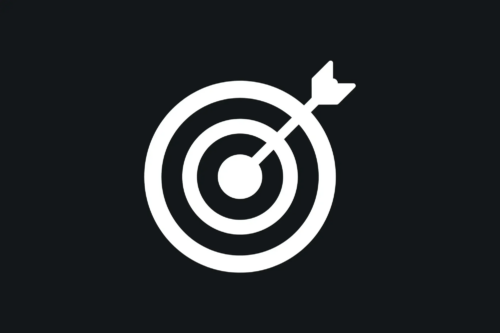
Health and wellness organizations face a sobering reality: Your website is a prime target for cybercriminals, and the stakes couldn’t be higher. Personal health information sells for top dollar on the dark web, HIPAA violations carry crushing penalties, and a single security breach can destroy decades of reputation building overnight.
Yet many health leaders still cling to the dangerous assumption that “we’re just a small practice—who would target us?” The answer is simple: Everyone.
This “small practice” mindset creates the most dangerous blind spot of all. Cybercriminals often prefer smaller targets because they often have weaker defenses. Your organization’s size doesn’t make it invisible—it makes your data a more inviting target.
Why Are Health Sites Prime Targets for Hackers?
Personal health information (PHI) is a goldmine for malicious actors. Unlike credit card numbers that can be quickly canceled, medical records contain permanent details about your patients’ identities, treatments, and conditions. This information enables sophisticated identity theft, insurance fraud, and targeted exploitation that can harm patients for years.
HIPAA-protected data doesn’t just include obvious medical records. Your website likely collects protected health information through appointment bookings, patient portals, and even chatbots. Each of these touchpoints are potential entry points for attackers who understand personal health information is more valuable than financial data.
Your hosting environment becomes particularly valuable when attackers gain server-level access, allowing them to leverage misconfigured systems for spam operations, illegal content hosting, or botnet activities. Payment systems present especially lucrative targets with attackers stealing credit card and insurance payment information through man-in-the-middle attacks, or harvesting personal information linked to billing profiles.
The Real Cost of a Security Breach
When your website is compromised, the damage extends far beyond the initial attack. Google’s algorithms detect security issues quickly and respond with the digital equivalent of a scarlet letter: bright red warning banners that appear before visitors can access your site. These warnings don’t just scare away new patients or visitors. They signal to every current and potential patient that your organization can’t be trusted with sensitive information.
Beyond the reputational damage, security breaches pose significant threats to a wide array of your marketing efforts. Email providers like Outlook and Gmail blacklist compromised domains, meaning marketing campaigns and important communications suddenly can’t reach your audience. Your carefully crafted newsletters, appointment reminders, and promotional emails disappear into digital purgatory.
Search engines also penalize hacked sites by dropping them from results pages, wiping out months or years of investment in SEO. Slow, compromised sites also increase bounce rates and reduce conversions, directly undermining your patient acquisition efforts.
Meanwhile, you’re racing against time to clean up the mess. Recovery from a breach typically takes longer than organizations anticipate, with time needed for technical remediation, legal compliance, and reputation repair. The cleanup costs often dwarf the prevention expenses by orders of magnitude.
Where Are Health Websites Vulnerable to Security Gaps?
Health and wellness organizations can create dangerous security gaps without realizing it. IT departments focus their expertise on internal systems — servers, networks, and electronic health records. However, websites themselves are often viewed as “marketing’s problem.” Your team, meanwhile, lacks the technical security knowledge to protect these critical digital assets.
This division becomes particularly hazardous because marketing controls some of the highest-risk elements: patient intake forms, appointment booking systems, and third-party plugins. These teams also manage relationships with agencies, platforms, and vendors, which each present potential vulnerabilities that IT never reviews.
Employee turnover compounds these risks. When marketing staff or contractors leave, they often retain admin access to hosting accounts, domain registrations, and content management systems. IT departments may not even know these accounts exist, let alone remember to update login information or revoke access.
HIPAA compliance is another shared responsibility that falls through organizational cracks. Marketing pages that collect any patient information must meet the strict security standards to protect patient data, but they rarely receive the same attention.
7 Security Best Practices for Health & Wellness Sites
The digital security landscape is always in motion, and your digital marketing platform requires care to remain secure and stable. Below, we’ve outlined a few key areas of attention to limit your organization’s security risks.
1. Add Multi-Factor Authentication to Everything
The most frequent security failures start with basic authentication weaknesses. When attackers compromise these accounts, they gain backdoor access to all your systems. Multi-factor authentication should be your first line of defense. Every administrative account, from your hosting provider to your content management system should use MFA to grant access.
2. Manage User Access on a Consistent Basis
Grant each user the minimum privileges necessary for their role and conduct regular audits to remove inactive accounts. When employees leave, immediately revoke their access to all website-related systems—not just internal IT resources. Create policies for managing dormant accounts that could provide persistent access to attackers.
3. Choose Your Plugins Carefully
WordPress sites face particular risks from plugin proliferation. Minimize plugin usage by coding custom solutions to create simple website functionality. When you must use plugins, research the developers thoroughly, check update histories, and prioritize tools with active maintenance. Keep everything updated with the latest security patches, and remove any website plugins that are no longer supported.
4. Institute HIPAA-Compliant Data Handling
Your website cannot store personal health information. All patient data must connect to HIPAA-compliant systems through encrypted channels. Patient portals, chatbots, and appointment booking systems also need attention to ensure they meet regulatory requirements while protecting against attacks.
5. Conduct Due Diligence Before Hiring Third-Party Vendors and Platforms
Outside vendors, automation platforms, and analytics tools often require administrative access to your systems. Third-party vendor relationships create additional exposure through weak API security and poorly configured integrations. You should establish security requirements in all contracts and maintain an inventory of every third-party integration to assess the security.
6. Use Custom Security Configurations to Eliminate Low-Hanging Fruit
Default configurations expose your organization to further risk. Standard WordPress installations use predictable login URLs and admin paths that attackers can easily discover and exploit. Many organizations also lack proper user management, granting excessive privileges to accounts who only need limited access for their role.
7. General Website Protection Strategies
Block website access from countries where you don’t serve patients, and consider whitelisting trusted IP addresses for administrative functions. Attacks often originate from predictable geographic regions that have no legitimate reason to access your site.
Activity monitoring and logging also create essential forensic capabilities should an attack or breach occur. You should track every administrative action, login attempt, and suspicious activity. Real-time alerts help you respond to threats before they escalate, while comprehensive logs enable proper incident response when problems occur.
The Business Case for Professional Security Management
Your health organization specializes in patient care — not cybersecurity. The expertise required to properly secure websites demands full-time attention to evolving threats, emerging vulnerabilities, and changing compliance requirements.
The threat landscape evolves daily. Staying current with the specific ways attackers target health websites requires security expertise and experience that’s impossible to maintain as a side responsibility. Effective security protects your search visibility and ensures your marketing investments continue to deliver maximum results.
Fundamentally, partnering with GLIDE Health provides peace of mind that allows you to focus on patient care and practice growth. Ready to ensure your organization, your patients, and your reputation has the security measures in place? Contact GLIDE Health and let’s get started.




